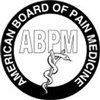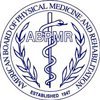Home »
Blog » Platelet-Rich Plasma (PRP)
| Stem Cell, PRP, Acupuncture in Queens & Long Island, New York
Platelet-rich Plasma (prp) | Stem Cell, PRP, Acupuncture in Queens & Long Island, New York
What is Hip Tendonitis? Tendons are fibrous tissues that connect muscles to bones, enabling movement. In the hip joint, tendons endure tremendous strain as they support activities like walking, running, climbing stairs, and even sitting. When these tendons become overused or injured, they can become inflamed, leading to a painful condition known as hip tendonitis. This condition can affect anyone, but it’s especially common in athletes, older adults, or individuals with jobs that require repetitive motions. For many, the pain isn’t just physical, it’s emotional, too. Feeling unable to do the things you love, or even just move without discomfort, can weigh heavily on the mind and spirit.
Read more
Trochanteric bursitis, also referred to as greater trochanteric pain syndrome (GTPS), is a common cause of hip pain that can significantly affect daily life. This condition involves inflammation of the trochanteric bursa, a small, fluid-filled sac located near the greater trochanter of the femur. The bursa’s primary function is to reduce friction between the bone and surrounding soft tissues during movement. When inflamed, the bursa can cause discomfort, pain, and limited mobility in the hip area.
Read more
Hip arthritis is a common yet often misunderstood condition that can significantly affect quality of life. Characterized by the deterioration of the cartilage in the hip joint, it leads to pain, stiffness, and difficulty in performing everyday activities. With advancements in medicine, particularly interventional pain management, there are effective ways to manage this condition and regain mobility and independence.
Read more
Tennis elbow, medically known as lateral epicondylitis, is a common condition that causes pain and discomfort in the outer part of the elbow. Despite its name, tennis elbow doesn’t only affect tennis players. It’s a condition that can impact anyone who performs repetitive arm and wrist movements, such as painters, plumbers, or even office workers. This article explores the nature of tennis elbow, its causes, symptoms, and treatment options, focusing on how interventional pain management can provide relief and restore functionality.
Read more
Golfer's elbow, medically known as medial epicondylitis, is a condition characterized by pain and inflammation on the inner side of the elbow. This ailment results from overuse or repetitive stress, leading to microtears in the tendons that attach to the medial epicondyle—the bony prominence on the inside of the elbow. While commonly associated with golfers, this condition can affect anyone engaging in activities that involve repetitive wrist and forearm motions.
Read more
What Are Elbow Sprains and Strains? An elbow sprain involves stretching or tearing the ligaments—the tough bands of tissue connecting bones—within the elbow joint. This typically occurs due to a sudden force, such as a fall onto an outstretched hand or a direct blow to the elbow. Conversely, an elbow strain refers to an injury of the muscles or tendons around the elbow, often resulting from overuse or excessive stretching.
Read more
Tendonitis is a common condition that can cause significant discomfort and disrupt daily activities. It occurs when a tendon—the thick, fibrous cord connecting muscle to bone—becomes inflamed due to overuse, injury, or age-related degeneration. At Precision Pain Care and Rehabilitation, our focus on interventional pain management provides advanced treatment options to help patients find relief and regain mobility. This blog explores tendonitis, its causes, symptoms, treatment options, and how interventional pain management can be an effective approach for long-term recovery.
Read more
Arthritis in the hand and wrist is a common condition that can significantly impact daily life, limiting the ability to perform simple tasks such as gripping, writing, or lifting. As the hands and wrists are essential for most activities, arthritis in these areas can lead to pain, stiffness, and reduced functionality. At Precision Pain Care and Rehabilitation, interventional pain management techniques provide effective relief and help restore quality of life for patients.
Read more
Platelet-rich plasma (PRP) therapy is a cutting-edge medical treatment that harnesses the body's natural healing mechanisms to promote tissue repair and regeneration. PRP has gained widespread recognition for its efficacy in treating various musculoskeletal conditions, offering patients a non-surgical alternative for pain relief and improved function.
Read more
Spinal conditions often come with difficult symptoms like chronic pain. Interventional pain management physicians use various medical approaches to address your spinal condition and related symptoms. This includes platelet-rich plasma (PRP) therapy for many of our patients. PRP treatment is a type of regenerative medicine based on a sample of your blood. With centrifuge technology, your provider concentrates the parts of your blood that trigger healing and new growth, which can then be returned to a treatment area around your spine.
Read more
Love this Post? Spread the World






















